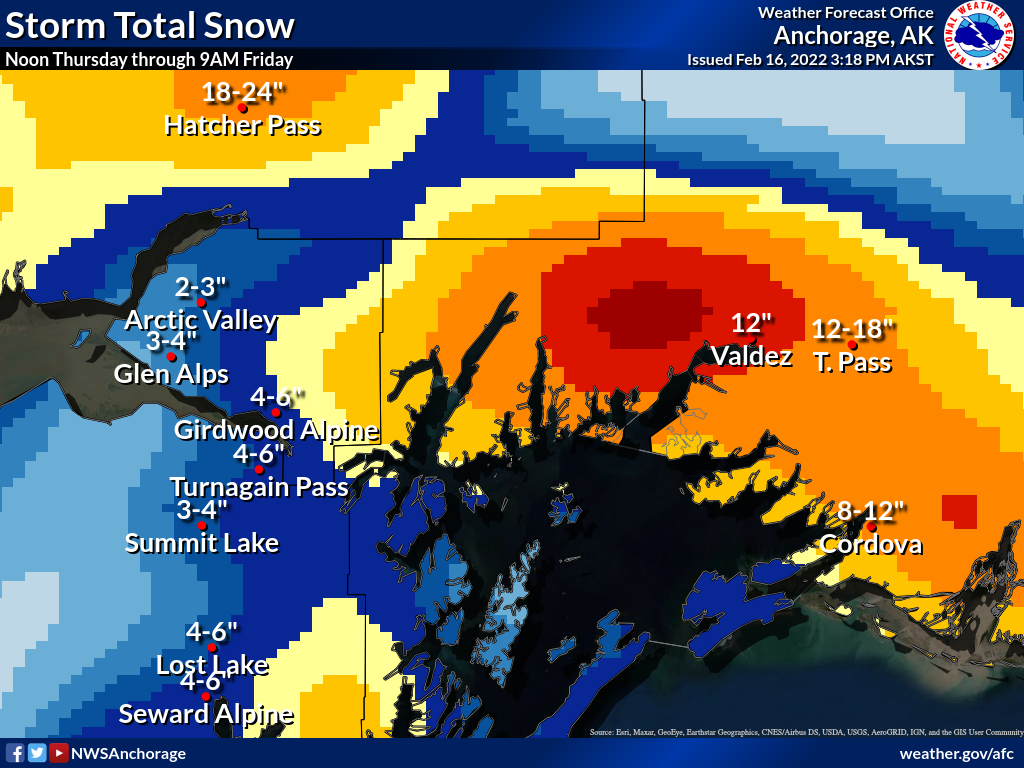Turnagain Pass
|
|
The avalanche danger is CONSIDERABLE above 2500′ today. Lingering wind slabs up to 2′ deep that formed yesterday are likely for a person to trigger at higher elevations and in steeper terrain. Another storm is approaching this afternoon which will bring 6-12″ of snowfall to the forecast area and will increase avalanche danger this evening and overnight. Below 2500′ the avalanche danger is MODERATE. Wind slabs are possible for a person to trigger in exposed terrain. Loose snow avalanches in steeper terrain are likely and could include loose wet avalanches below 1000′.
- Hatcher Pass Avalanche Center issued an Avalanche Warning yesterday with HIGH avalanche danger. More snowfall today and into tomorrow will cause continued very dangerous avalanche conditions in the area. Stay tuned to HPAC for more information.
- Western Kenai Peninsula- NWS Special Weather Statement for mixed snow and rain late Thursday morning through Friday morning
- Matanuska Valley – NWS Winter Weather Advisory for 6-10″ snowfall



